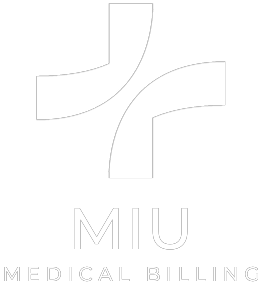Introduction
As healthcare practitioners regularly billing Medicare, many face a persistent, minor discrepancy between the total payment of the services that are approved and the actual payment that is received in the account. At first look, this discrepancy might look like a coding problem, a processing glitch, or a clerical error. But mostly it is because of systematic and legal reasons, a reduction called “sequestration.”
In U.S. healthcare and billing language, sequestration means an automatic, across-the-board 2% deduction in Medicare Fee-for-Service (FFS) reimbursements. It is applied when the claim is reviewed and approved, which indicates that the insurer has accepted your claim. However, federal law still needs the final payment to be reduced. It is not due to any error or denial but an enforced deduction put on every Medicare FFS payment despite its location, service type, or specialty.
Understanding sequestration is highly essential for financial planning and reimbursement checks. Hence, to learn how to manage your revenue, improve your billing, and overall gain knowledge, read our experts’ guidance provided below.
What Is Sequestration in Medical Billing?

In the ever-evolving world of healthcare reimbursement, “sequestration” has an impact on your practice’s finances. In the language of medical billing, it refers to a legally necessary deduction in certain federal payments, which includes Medicare Fee-For-Service (FFS) reimbursements.
How did it start?
It all started when a federal law, the “Budget Control Act of 2011,” was passed during a time of increased concerns over the national deficit. The law was designed to restrain government expenditure by triggering across-the-board deductions to different federal programs if specific deduction targets weren’t achieved. If not achieved, a process named “sequestration” came into play in March 2013, including Medicare reimbursements.
Is it the effect on Medicare reimbursement?
The law demanded a 2% reduction in approved payments for Medicare Fee-for-Service. This refers to even when the claim is submitted, reviewed, and approved, the end payment sent to the provider will automatically decrease by 2%, a flat cut applied uniformly.
How Sequestration Impacts Providers in the U.S.
The impact may appear to be little, but it becomes significant over time. Let’s say a patient is billed for $1,000, and Medicare approves it, but the payment after the cut will be decreased by 2%, which makes it $980. It’s a $20 deduction per claim because of the sequestration only. It does look like a lot, but if you multiply this value by hundreds of claims, then it’s a loss of thousands.
This Affects:
- Solo providers
- Multi-practitioner clinics
- Hospital billing departments
- Ambulatory surgical centers
- Diagnostic centers
MIU Strategies to Minimize Sequestration Losses
Though it’s unavoidable, sequestration can be minimized with the smart strategies mentioned below:
Optimizing Billing workflows
- Reestablish contacts with private payers for higher reimbursement rates.
- Improving coding accuracy aids in reducing denials
- Increased clean claim rate by ensuring insurance eligibility verifications.
Outsourcing Your Billing

For small clinics, losing revenue due to undertrained billing staff and overlooked reductions is something we commonly see in the healthcare industry. Working with a professional medical billing team of experts like MIU ensures that it provides:
- Real-time tracking of sequestration
- Optimizing every claim
- Frequent audits to cover the gaps in payment collections
State-Specific Considerations
Although sequestration is a government policy, its effects differ by local reimbursement structures, insurer mix, and state Medicaid programs.
Here’s an overview of different states in comparison:
| State | Level of Impact | Notes |
|---|---|---|
| Texas | High | Large Medicare population, rural clinic strain |
| California | Medium | Urban providers offset with higher private pay |
| Florida | High | High-volume Medicare retiree base |
| New York | Low | Strong Medicaid support offsets Medicare cuts |
| Ohio | Medium | Mixed FFS and Advantage payer base |
Our team knows the complexities in state-specific payer behaviors and can aid in tailoring your billing strategies as per your unique requirements.
MIU vs. Most Billing Companies
Experts at MIU Medical Billing are able to provide visual walkthroughs of remittance advice, Medicare-specific billing examples, state-by-state impact comparisons, downloadable tools, and expert guidance, support designed to facilitate small- to mid-sized U.S. practices, and much more. On the other hand, most companies just have the basic knowledge on sequestration, generic information without practical advice, and no visuals or code guidance.
Conclusion
Sequestration in medical billing is a persistent, unavoidable, and costly issue, but it can be managed. The key is to have a team that understands it well, tracks it down, and covers the losses while preventing avoidable losses.
Through better billing practices and strategic adjustments, you can take control of your revenue cycle. Experts at MIU are well-trained, trustworthy, and hardworking. We consider your finances as our own!
FAQs
What is sequestration in medical billing?
It refers to the 2% automatic compulsory deduction from the total payment made by the federal budget legislation.
Will sequestration still exist in 2025?
Yes, it is still in effect until the new federal legislation comes up with different laws.
Can I appeal for a sequestration reduction?
Unfortunately, no, since it’s a federal law and not a payer decision; hence, appeals are not applicable.




